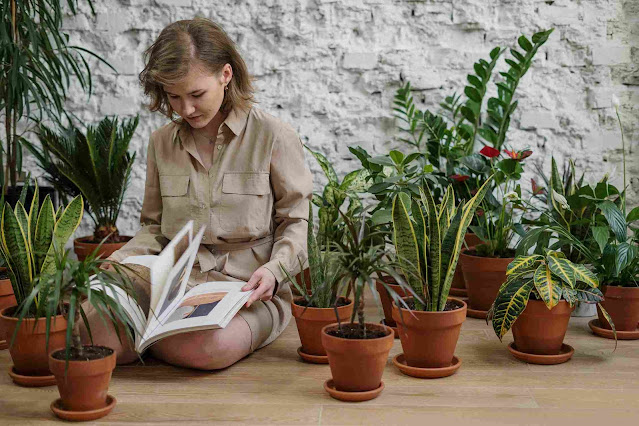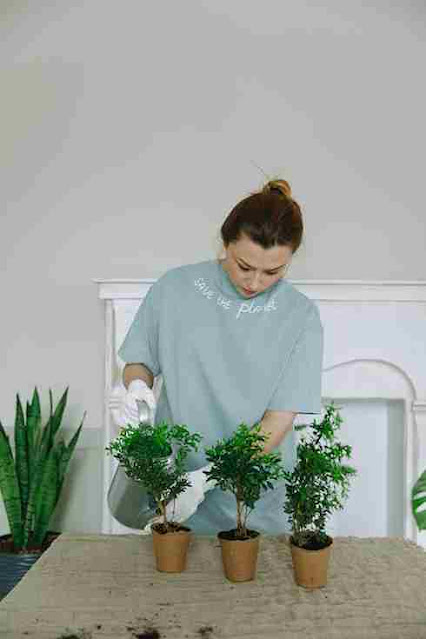Outline of the Article
I. Introduction
- The challenge of gardening in low-light conditions.
- Importance of selecting plants suited for minimal sunlight.
II. Understanding Light Requirements
- Differentiating between full sun, partial sun, and shade.
- How light influences plant growth and development.
III. Plants that Thrive in Low-Light Environments
- H1: Snake Plant
- H2: ZZ Plant
- H2: Pothos
- H2: Peace Lily
- H2: Spider Plant
IV. Choosing the Right Location Indoors
- Evaluating indoor spaces for natural light.
- Strategies for maximizing available sunlight.
V. Container Gardening Tips
- Selecting the appropriate containers.
- Soil considerations for potted plants.
VI. Low-Light Outdoor Gardening
- H1: Hostas
- H2: Ferns
- H2: Bleeding Heart
- H2: Coral Bells
- H2: Astilbe
VII. Supplementing Light with Artificial Sources
- Choosing the right grow lights.
- Proper placement and duration for artificial light.
VIII. Common Challenges and Troubleshooting
- Signs of inadequate light and how to address them.
- Preventing issues like leggy growth.
IX. Benefits of Low-Light Plants
- Improving indoor air quality.
- Creating a calming and aesthetic environment.
X. Conclusion
- Empowering gardeners with the knowledge to thrive in low-light conditions.
What Plants Can Grow with Little to No Sunlight?
Introduction
Embarking on the journey of gardening is a thrilling endeavor, but when faced with spaces that receive little to no sunlight, the challenge becomes apparent. The pursuit of finding plants that not only survive but thrive in low-light conditions has become a quest for many urban dwellers and indoor gardening enthusiasts. In this guide, we'll explore the diverse world of plants that can flourish with minimal sunlight and how to cultivate a green oasis in the shadowy corners of your living spaces.
Understanding Light Requirements
Differentiating Between Full Sun, Partial Sun, and Shade
Understanding the nuances of light requirements is the first step in successful gardening. While some plants crave the direct sunlight of a south-facing window, others are adapted to thrive in the dappled shade of a corner. Recognizing the distinctions between full sun, partial sun, and shade is crucial for selecting the right plants for your specific environment.
How Light Influences Plant Growth and Development
Light is the engine of photosynthesis, the process by which plants convert light into energy. Insufficient light can hinder this vital process, leading to stunted growth and diminished vitality. It's essential to choose plants that have adapted to low-light conditions to ensure they can thrive without the abundant sunlight found in their natural habitats.
Plants that Thrive in Low-Light Environments
Snake Plant (H1)
The snake plant, also known as Sansevieria, is a low-maintenance, hardy choice for low-light spaces. With its upright, sword-like leaves, it not only survives neglect but can also thrive in conditions where other plants might wither.
ZZ Plant (H2)
The ZZ plant, or Zamioculcas zamiifolia, is renowned for its ability to tolerate low light and drought. Its glossy, dark green leaves add a touch of elegance to indoor spaces, making it a popular choice for offices and homes.
Pothos (H2)
Pothos, with its cascading vines and heart-shaped leaves, is a resilient plant that adapts well to low-light conditions. It's an excellent choice for beginners and can thrive in various indoor settings.
Peace Lily (H2)
Known for its elegant white blooms and air-purifying qualities, the peace lily can thrive in low-light areas. It adds a touch of serenity to spaces with its graceful, arching leaves.
Spider Plant (H2)
The spider plant, or Chlorophytum comosum, is a versatile and adaptable choice for low-light conditions. Its arching, variegated leaves make it a visually appealing addition to any indoor garden.
Choosing the Right Location Indoors
Evaluating Indoor Spaces for Natural Light
Assessing the available natural light in your indoor spaces is crucial for plant selection. Identify windows and areas that receive indirect or filtered sunlight. Understanding the direction of sunlight and the intensity it provides helps in placing plants where they can thrive.
Strategies for Maximizing Available Sunlight
While low-light plants are resilient, maximizing available sunlight remains essential. Consider placing plants near windows with filtered sunlight, rotating them periodically to ensure all sides receive adequate light exposure.
Container Gardening Tips
Selecting the Appropriate Containers
Choosing the right containers is vital for successful low-light gardening. Opt for containers with drainage holes to prevent waterlogging, and consider the size to accommodate the plant's root system. Container gardening offers flexibility, allowing you to move plants to catch the available sunlight.
Soil Considerations for Potted Plants
Selecting the appropriate soil is crucial for container gardening. Choose well-draining potting mixtures to prevent water accumulation, and consider adding organic matter for nutrient retention. Regularly monitor soil moisture to ensure optimal growing conditions.
Low-Light Outdoor Gardening
Hostas (H1)
Hostas are shade-loving plants that thrive in outdoor spaces with limited sunlight. Their lush foliage and diverse varieties make them an attractive choice for gardens with shaded areas.
Ferns (H2)
Ferns are well-suited for low-light outdoor environments, bringing a delicate and feathery texture to shaded corners. Varieties like the maidenhair fern are particularly resilient in limited sunlight.
Bleeding Heart (H2)
Known for its heart-shaped flowers, the bleeding heart is a perennial that thrives in partial to full shade. Its unique blossoms and fern-like foliage add charm to shaded garden beds.
Coral Bells (H2)
Coral bells, or Heuchera, are versatile perennials that adapt well to partial shade. With their vibrant foliage and dainty flowers, they bring color and interest to shaded outdoor spaces.
Astilbe (H2)
Astilbe, with its feathery plumes of flowers, is an excellent choice for shaded gardens. These perennials add height and texture, creating a dynamic and visually appealing landscape.
Supplementing Light with Artificial Sources
Choosing the Right Grow Lights
In situations where natural light is insufficient, supplementing with artificial light becomes necessary. LED or fluorescent grow lights designed for plants can provide the necessary spectrum for photosynthesis. Consider factors like light intensity and duration when incorporating artificial lighting.
Proper Placement and Duration for Artificial Light
Positioning grow lights at the correct distance from plants is crucial to prevent light burn or inadequate exposure. Establish a consistent lighting schedule, mimicking natural daylight cycles, to ensure plants receive the appropriate duration of artificial light.
Common Challenges and Troubleshooting
Signs of Inadequate Light and How to Address Them
Detecting signs of inadequate light is vital for troubleshooting. Pale or yellowing leaves, leggy growth, and a lack of flowering can indicate insufficient light. If these issues arise, consider relocating plants to brighter spots or supplementing with artificial light.
Preventing Issues Like Leggy Growth
Leggy growth, where plants become elongated with sparse foliage, is a common challenge in low-light conditions. To prevent legginess, regularly rotate plants to ensure even light exposure and prune them to encourage bushier growth.
Benefits of Low-Light Plants
Improving Indoor Air Quality
Many low-light plants, such as snake plants and peace lilies, are known for their air-purifying qualities. They can filter out common indoor pollutants, enhancing the overall air quality in your living spaces.
Creating a Calming and Aesthetic Environment
The lush, green foliage of low-light plants contributes to a calming and aesthetic environment. These plants are not just functional; they also add a touch of nature to indoor spaces, promoting a sense of well-being.
Conclusion
In conclusion, cultivating a garden in spaces with little to no sunlight is not only possible but can also be a rewarding experience. Armed with the knowledge of plants that thrive in low-light conditions, indoor and outdoor gardeners alike can transform shaded corners into vibrant, green retreats. From the resilient snake plant to the delicate beauty of astilbe, there's a diverse array of options to suit every taste and space.
FAQs
1. Can I grow plants in a room with no windows?
While challenging, it is possible with the right low-light plants and supplemental artificial lighting. Choose plants like snake plants and ZZ plants that can thrive in low-light conditions.
2. How do I prevent overwatering in low-light conditions?
Ensure proper drainage in containers, use well-draining soil, and adjust watering frequency based on the plant's specific needs. Allow the topsoil to dry out slightly before watering.
3. Are there flowering plants that can bloom in low-light areas?
Yes, certain low-light plants, such as peace lilies, can produce flowers even in limited sunlight. However, the intensity and frequency of flowering may vary compared to plants in optimal light conditions.
4. Can I use regular household lights for supplemental lighting?
While not ideal, some household lights can supplement low-light conditions. However, for optimal plant growth, it's recommended to use specialized grow lights designed for plants.
5. How can I encourage blooming in low-light plants?
Ensure that the plant is receiving the maximum available light, whether natural or artificial. Additionally, providing the right nutrients, maintaining proper watering practices, and occasionally fertilizing can encourage blooming.








.jpg)


0 Comments